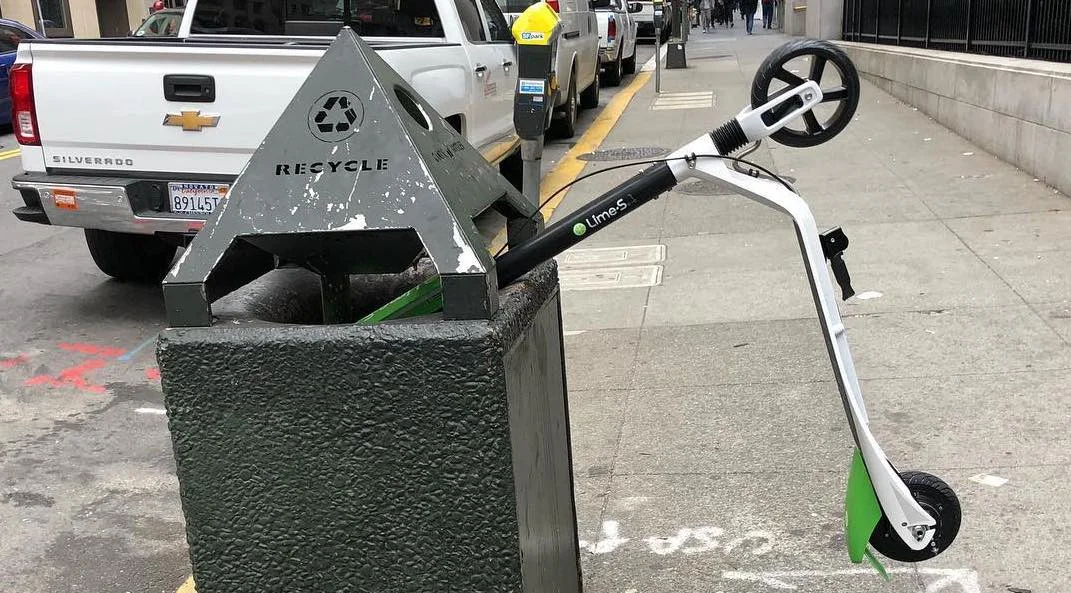The Atlantic, 2018, 2:26… Michael Pollan explains how front lawns are endemic to America—and emblematic of the country's hypocrisies. “The conceit of the American suburb is that we’re all in a great park together,” Pollan says in the film. “The lawn symbolizes that continuity.” And yet, Pollan explains, despite the fact that lawns are the largest irrigated crop in the country, Americans tend to avoid using them.
Non-Genital Orgasm & Disability
Prejudice at the Pool
The Science Behind Implicit Bias Training
PBS NewsHour, 2018, 9:12… Against the backdrop of simmering tensions over race and police violence against African Americans, police departments like the NYPD have introduced a relatively new training program aimed at teaching officers about implicit bias. Special correspondent Charlayne Hunter-Gault reports on the research behind “Fair and Impartial Policing” and whether it’s really effective.
Pay Toilets, Feminism, and Accessibility
The Real Fake News
Scooters & Vigilante Activism
Inside Edition, 2018, 1:41… Backlash over the electric scooter craze is growing. Social media videos show people so fed up with the modes of transportation that they are throwing scooters from rooftops. In another video posted to Instagram, one scooter was set on fire. Others are tossed into the trash or ocean. The backlash is happening across the country, but particularly in southern California, where Bird scooters are left on sidewalks for anyone to rent through a cell phone app.
Identification, Bureaucracy, and The Self
Vice News, 2018, 6:19… Police departments in Dallas and surrounding counties have agreed to allow their officers to accept ID cards issued by Dallas Area Interfaith, the Diocese of Dallas and several local parishes. These interfaith IDs have no legal bearing - it still remains up to an officer’s discretion whether to accept the identification (which includes a photo, name, DOB, address and the name of the parish that issued them the ID), but the desired outcome would be to quell some of the concerns present in the immigrant community, and help officers police more efficiently.
Teenage Fads in the News
Universal Basic Income
The Atlantic, 2018, 3:20… America is the richest civilization in history. Why, then, are our living standards so low compared to those of other wealthy democracies? “There’s a big idea out there that could help solve this,” says The Atlantic writer Annie Lowrey. “It’s called a universal basic income.” In a new animated video, Lowrey argues that UBI—a concept that has existed for more than 500 years—would help close the income inequality gap, eliminating poverty and increasing mobility and opportunity for all American citizens.
Fem Bots
Cultural Identity & The Nameplate Necklace
The Guardian, 2018, 6:58… If you don't already own a 'Carrie necklace', chances are you've seen them in music videos, films, fashion shoots – and, of course, in Sex in the City. But the origins and cultural significance of the jewellery goes much deeper than Carrie Bradshaw. Grace Shutti explores the origins of the nameplate necklace, which emerged from black and Hispanic communities in 1970s New York and draws on graffiti and hip-hop culture.
Cat Videos and Control
Hip Hop Goes To The Museum
The Identity of Hong Kong
Vox, 2018, 14:24… When Britain handed Hong Kong back to China in 1997, Chinese leaders agreed that Hong Kong would be able to keep its economic and political systems, including some of the civil freedoms denied to China’s citizens on the mainland, for the next 50 years. Although Hong Kong still has nearly 30 years of semi-autonomy left, China has started tightening its grip, and many believe it is chipping away at Hong Kong’s freedoms.
Social Class and the Retail Apocalypse
Hobo Graffiti
Vox, 2018, 5:36… Hobos used graffiti, or tramp writing, as a messaging system to tell their fellow travelers where they were and where they were headed next. Hobos would scratch or draw their road persona, or moniker, onto stationary objects near railroad tracks like water towers and bridges. News stories at the time, largely informed by hobos themselves, spread tales of a different kind of graffiti though.




















